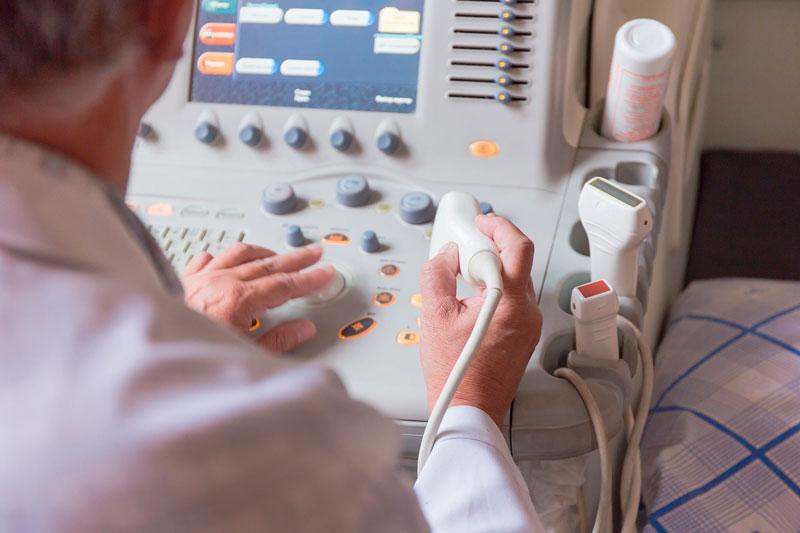
Intestinal ultrasound is useful in monitoring disease course and evaluating short-term treatment response in patients with ulcerative colitis (UC) and may serve as a viable point-of-care tool in general practice, according to data from the TRUST&UC* study.
TRUST&UC enrolled 253 consecutive patients with a diagnosis of a proctosigmoiditis, left-sided colitis or pancolitis currently in clinical relapse (defined as Short Clinical Colitis Activity Index [SCCAI] ≥5).
A total of 224 patients (88.5 percent) had an increased bowel wall thickness (BWT) in the descending or sigmoid colon at baseline, as assessed using duplex/Colour Doppler ultrasonography. Of these, half had a left-sided colitis while the other half had a pancolitis.
The number of patients with an increased BWT in the sigmoid or descending colon decreased significantly within the first 2 weeks of the study, from 89.3 percent to 38.6 percent and from 83.0 percent to 42.9 percent (p-both<0.001), respectively. This remained low at weeks 6 and 12 (sigmoid colon: 35.4 percent and 32.0 percent; descending colon: 43.4 percent and 37.6 percent; p<0.001).
BWT normalization and clinical response following 12 weeks of treatment were strongly correlated, such that 90.5 percent of patients with normalized BWT had symptomatic response (p<0.001).
The present data provide evidence that monitoring BWT alone has the potential to predict the therapeutic response, which should be verified in future studies, according to researchers.
*The study TRansabdominal Ultrasonography of the bowel in Subjects with IBD To monitor disease activity with UC